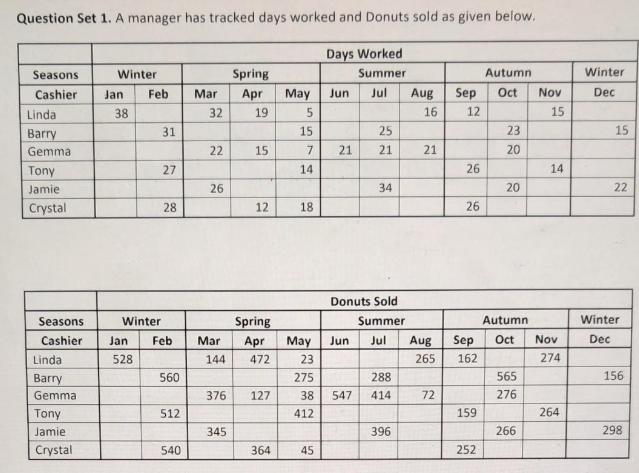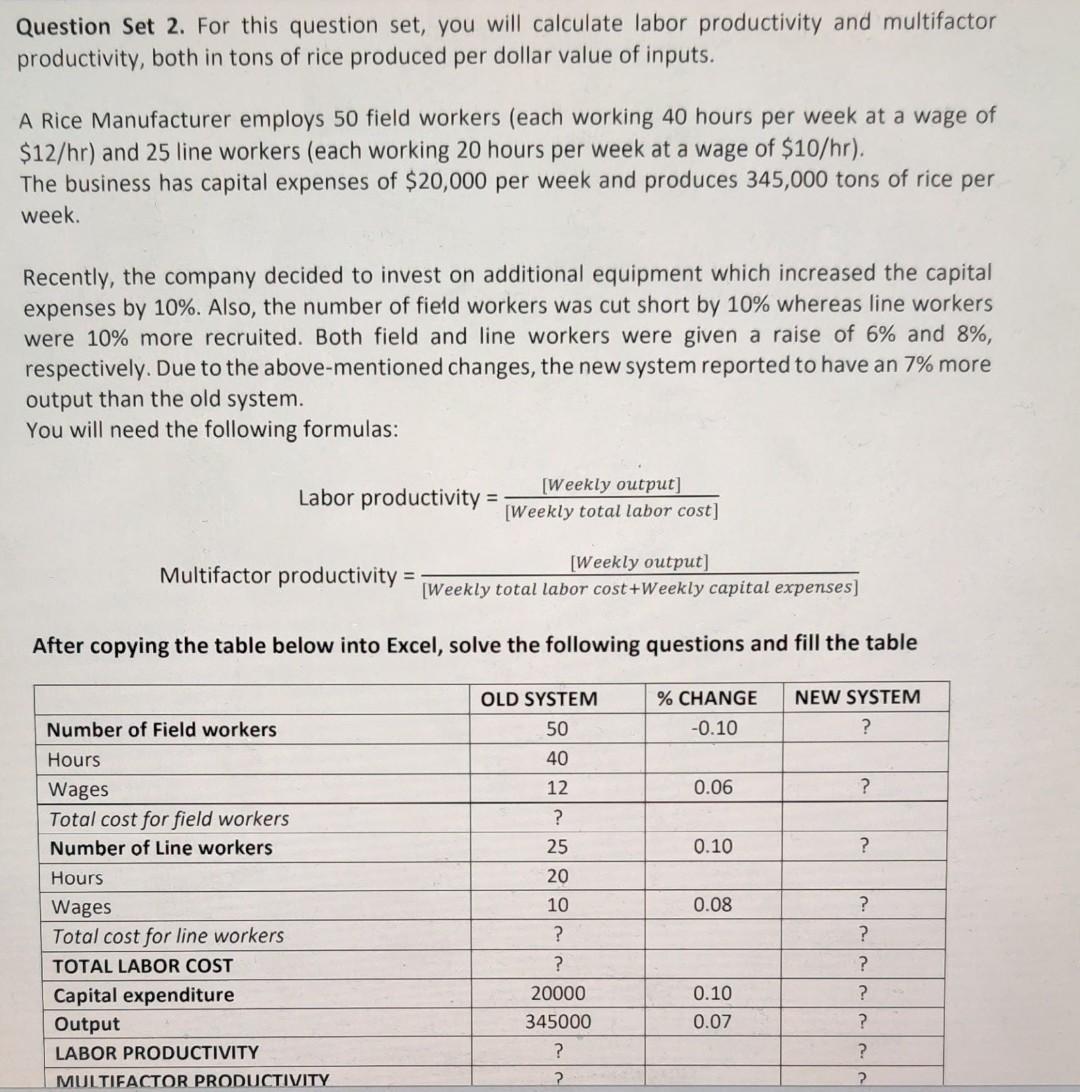Answered step by step
Verified Expert Solution
Question
1 Approved Answer
1. For each cashier, compute his or her overall productivity (in Donuts sold per day) for Winter and Summer. You should have one number




1. For each cashier, compute his or her overall productivity (in Donuts sold per day) for Winter and Summer. You should have one number per cashier. (3pts) 2. For each cashier, compute his or her productivity (in Donuts sold per day) for Autumn. Using the MIN function, find the lowest productive cashier for the Autumn among the cashiers. (3pts) 3. Compute the overall productivity for each cashier (in Donuts sold per day) for the entire year. Use the MIN function to find the lowest productive cashier for the year among the cashiers. (3 pts) 4. Which month has the highest overall productivity? (2 pts) Question Set 1. A manager has tracked days worked and Donuts sold as given below. Days Worked Summer Autumn Jul Aug Sep Oct Nov 16. 12 15 Seasons Cashier Linda Barry Gemma Tony Jamie Crystal Seasons Cashier Linda Barry Gemmal Tony Jamie Crystal Winter Jan Feb 38 31 Winter 27 28 560 512 Mar 540 32 22 Jan Feb Mar 528 26 376 Spring Apr 345 19 Spring Apr 144 472 15 12 127 364 May 5 15 7 14 18 May Jun 45 21 25 21 Jun 34 Donuts Sold Summer 23 275 288 38 547 414 412 Jul Aug 265 21 396 72 26 26 Sep 162 159 252 23 20 20 Autumn Oct Nov 274 565 276 14 266 264 Winter Dec 15 22 Winter Dec 156 298 Question Set 2. For this question set, you will calculate labor productivity and multifactor productivity, both in tons of rice produced per dollar value of inputs. A Rice Manufacturer employs 50 field workers (each working 40 hours per week at a wage of $12/hr) and 25 line workers (each working 20 hours per week at a wage of $10/hr). The business has capital expenses of $20,000 per week and produces 345,000 tons of rice per week. Recently, the company decided to invest on additional equipment which increased the capital expenses by 10%. Also, the number of field workers was cut short by 10% whereas line workers were 10% more recruited. Both field and line workers were given a raise of 6% and 8%, respectively. Due to the above-mentioned changes, the new system reported to have an 7% more output than the old system. You will need the following formulas: Multifactor productivity = Labor productivity = Number of Field workers Hours Wages Total cost for field workers Number of Line workers Hours Wages Total cost for line workers TOTAL LABOR COST Capital expenditure Output LABOR PRODUCTIVITY After copying the table below into Excel, solve the following questions and fill the table [Weekly output] [Weekly total labor cost] MULTIFACTOR PRODUCTIVITY [Weekly output] [Weekly total labor cost+Weekly capital expenses] OLD SYSTEM 50 40 12 ? 25 20 10 ? ? 20000 345000 ? ? % CHANGE NEW SYSTEM -0.10 ? 0.06 0.10 0.08 0.10 0.07 ? ? ? ? ? ? ? ? ? Number of Field workers Hours Wages Total cost for field workers Number of Line workers Hours Wages Total cost for line workers TOTAL LABOR COST Capital expenditure Output LABOR PRODUCTIVITY MULTIFACTOR PRODUCTIVITY % CHANGE FOR LABOR PRODUCTIVITY % CHANGE FOR MULTIFACTOR PRODUCTIVITY 50 40 12 ? 25 20 10 ? ? 20000 345000 ? ? ? ? -0.10 0.06 0.10 0.08 0.10 0.07 ? ? ? ? ? ? ? ? ? ? 1. Calculate the Total Input Cost for Old and New systems (Labor cost + capital expense) (2 pts) 2. Calculate the Capital Expenditure and Output of the new system (2 pts) 3. Calculate labor productivity including all employees (line workers & field workers) for the old and new systems, in tons of output per dollar of input. (4pts) 4. Calculate the multifactor productivity (including line workers, field workers, and capital expenses) for the old and new systems, in tons of output per dollar of input. (4pts) 5. Calculate the percentage changes in labor and multifactor productivity. (3pts)
Step by Step Solution
★★★★★
3.45 Rating (155 Votes )
There are 3 Steps involved in it
Step: 1

Get Instant Access to Expert-Tailored Solutions
See step-by-step solutions with expert insights and AI powered tools for academic success
Step: 2

Step: 3

Ace Your Homework with AI
Get the answers you need in no time with our AI-driven, step-by-step assistance
Get Started


